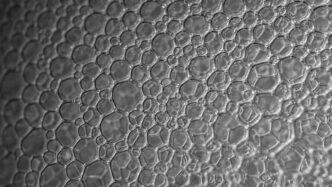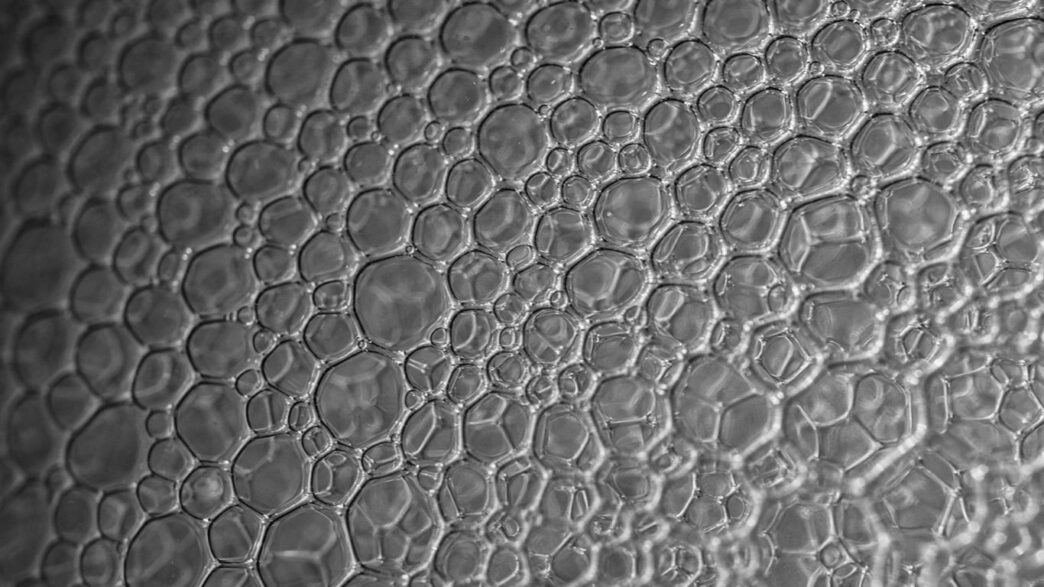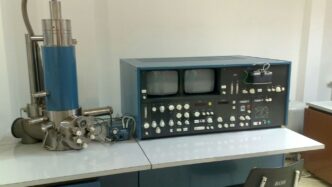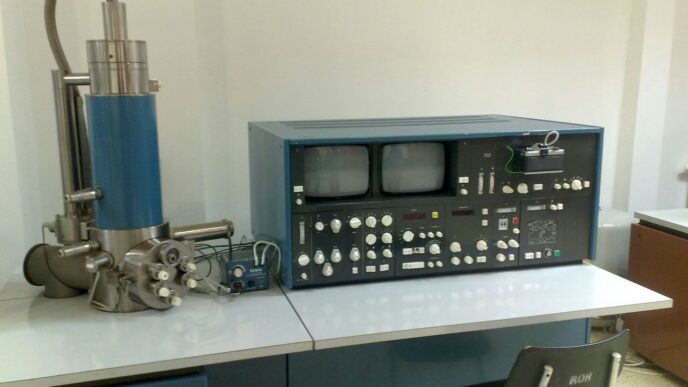Ever wonder how things get in and out of cells, or how dialysis machines work? It all comes down to something called a semi permeable membrane. Think of it like a bouncer at a club, deciding who gets in and who has to stay out. This article breaks down what these membranes are, where you find them, and why they’re so important in everyday life and in medicine. We’ll look at some common examples, like the ones in your own body, and even some you might encounter in the kitchen.
Key Takeaways
- A semi permeable membrane acts like a selective filter, letting some things through while blocking others. This property is key to many natural and artificial processes.
- Your body is full of these membranes, with the cell membrane being a prime example. It controls what enters and leaves your cells, which is vital for life.
- In medicine, semi permeable membranes are used in things like dialysis to clean blood, showing their life-saving applications.
- Simple household items, like a sieve, can help us understand the basic idea of a semi permeable membrane example, even though they aren’t perfect matches.
- Factors such as the size and type of molecules, along with the membrane’s own structure, determine what can pass through. This selective nature is what makes them so useful.
Understanding Semi Permeable Membranes

So, what exactly is a semi permeable membrane? Think of it like a bouncer at a really exclusive club. It decides who gets in and who doesn’t.
What Defines A Semi Permeable Membrane?
At its core, a semi permeable membrane is a barrier that lets some things pass through but blocks others. It’s not a free-for-all; there’s a selective process happening. This selectivity is usually based on the size of the molecules or ions trying to get across. Smaller particles might slip through the membrane’s ‘pores,’ while larger ones are held back. This selective passage is the defining characteristic of a semi permeable membrane. It’s this property that makes them so useful in everything from biology to industrial processes.
The Role Of Pressure And Concentration
It’s not just about size, though. The movement across these membranes is also influenced by external factors like pressure and concentration differences. Imagine a crowded room versus an empty one. People tend to move from the crowded area to the less crowded one, right? Molecules do something similar. If there’s a higher concentration of a substance on one side of the membrane, it’s more likely to move to the side where there’s less of it. Pressure plays a role too. Applying pressure can force molecules across the membrane, sometimes even against their natural concentration gradient. This is a bit like pushing people through a doorway when they might not have moved on their own.
Natural Versus Synthetic Membranes
These amazing membranes aren’t just something scientists invented in a lab. Nature has been using them for ages! Our own cells have semi permeable membranes that control what goes in and out, keeping the cell functioning properly. Think of the thin skin inside an eggshell – that’s a natural semi permeable membrane. On the flip side, we’ve also developed synthetic versions. These are often made from special plastics or polymers and are engineered for specific jobs, like filtering water or helping with medical treatments. They’re designed to mimic the selective nature of biological membranes but can be tailored for industrial needs.
Biological Semi Permeable Membrane Examples
Nature is a master at creating selective barriers, and nowhere is this more apparent than within living organisms. These biological membranes act as gatekeepers, controlling what goes in and out of cells and tissues. It’s a pretty amazing system when you think about it.
The Phospholipid Bilayer In Cell Membranes
Every single cell in your body, from the tiniest bacterium to the largest nerve cell, is wrapped in a boundary called the plasma membrane. This isn’t just a random bag; it’s a sophisticated structure primarily made of a phospholipid bilayer. Imagine a wall built from tiny bricks, where each brick has a water-loving head and two water-hating tails. These bricks line up in two layers, with the tails all tucked away on the inside, away from water, and the heads facing outwards towards the watery environment inside and outside the cell. This arrangement is what makes the membrane selectively permeable. It lets small, uncharged molecules like oxygen and carbon dioxide pass through easily, but it’s much pickier about larger or charged substances.
Cellular Communication And Transport
So, how do cells actually get the nutrients they need or get rid of waste if the membrane is so selective? Well, it’s not just a passive barrier. Embedded within that phospholipid bilayer are various proteins. Some of these proteins act like tiny tunnels or channels, allowing specific molecules or ions to cross. Others are like little pumps, using energy to actively move substances across the membrane, even against their natural flow. This controlled movement is vital for everything from nerve impulses to muscle contractions. Furthermore, cells ‘talk’ to each other using signaling molecules that bind to receptor proteins on the membrane surface. This binding triggers a chain reaction inside the cell, allowing it to respond to its environment or communicate with other cells. It’s a complex dance of molecules.
Osmotic Pressure In Living Organisms
Osmosis, the movement of water across a semipermeable membrane from an area of lower solute concentration to an area of higher solute concentration, plays a huge role in biology. Think about plants: their roots absorb water from the soil through osmosis. In your own body, osmosis helps maintain the right fluid balance in your cells. If you drink a lot of salt water, for instance, the concentration of solutes outside your cells increases. To balance things out, water will move out of your cells and into the surrounding fluid, which can lead to dehydration. This constant push and pull of water, driven by solute concentration differences across biological membranes, is what we call osmotic pressure, and it’s a fundamental force in keeping living things alive and functioning.
Medical Applications Of Semi Permeable Membranes
Semipermeable membranes are pretty amazing when you think about it. They’re not just in biology class; they’re actually used in some pretty important medical stuff. It’s all about controlling what gets through and what doesn’t, which is super handy when you’re dealing with things like blood and waste products.
Hemodialysis: Purifying The Blood
This is probably the most well-known medical use. When someone’s kidneys aren’t working right, they can’t filter waste from their blood. That’s where hemodialysis comes in. Basically, it’s an artificial kidney that uses a semipermeable membrane. Your blood flows through one side of the membrane, and a special cleaning fluid, called dialysate, flows on the other. The membrane lets waste products and extra fluid from your blood pass through into the dialysate, while keeping important things like blood cells and proteins in your blood. It’s a clever way to mimic what healthy kidneys do.
Here’s a simplified look at how it works:
- Blood In: Your blood, carrying waste products, is pumped from your body.
- Through the Dialyzer: It passes through a device containing the semipermeable membrane.
- Waste Removal: Small waste molecules and excess water move across the membrane into the dialysate.
- Clean Blood Out: The cleaned blood is returned to your body.
Artificial Membranes In Research
Beyond dialysis, scientists are using all sorts of artificial membranes in their research. They’re great for creating controlled environments to study how cells behave or how different substances interact. Think of them as tiny, selective barriers that let researchers isolate specific processes. For example, they might use a membrane to separate different types of cells in a lab dish to see how they communicate, or to test how drugs affect cells without the whole body getting in the way. These artificial membranes help us understand complex biological systems better.
Drug Delivery Systems
Another cool application is in how we deliver medication. Some advanced drug delivery systems use semipermeable membranes to control the release of drugs into the body over time. Imagine a small capsule with a membrane that slowly lets a medication seep out. This means you might not need to take as many pills, or the drug can be released exactly where it’s needed. It’s all about making treatments more effective and convenient for patients.
Everyday Analogies For Semi Permeability
Sometimes, the best way to get a handle on a scientific concept is to think about things we see every day. Semi-permeable membranes might sound complicated, but the basic idea is actually pretty simple. It’s all about letting some things through while holding others back.
The Kitchen Sieve As A Simple Model
Think about your kitchen. You’ve got strainers and colanders, right? You use them to rinse pasta or wash berries. What do they do? They let the water (the solvent) drain away, but they keep the solid food bits (the solutes) from escaping. It’s a physical barrier with holes of a specific size, allowing smaller things to pass while blocking larger ones. It’s not a perfect analogy, because a sieve doesn’t really care about concentration or pressure, but it gets the core idea across: selective passage.
Aquarium Tank Thought Experiment
Let’s try a little thought experiment. Imagine you have a big aquarium, and you divide it right down the middle with a special barrier – a semi-permeable membrane. Now, on one side, you pour in some salty water, and on the other side, you pour in plain, fresh water. This membrane is cool because it lets the water molecules wiggle through, but it’s too small for the salt ions to pass. What do you think happens?
- Water moves: The water molecules will naturally start moving from the side where there’s more water (the fresh water side) to the side where there’s less free water (the salty side). It’s like the water is trying to even things out.
- Concentration changes: Over time, the water level on the salty side might even rise a bit as more water moves in. The concentration of salt on that side will decrease, while the concentration on the fresh water side will increase slightly.
- Equilibrium is the goal: This process continues until the concentration of salt is roughly the same on both sides, or until the pressure difference created by the water level change stops more water from moving. This push and pull is the essence of osmosis, driven by the semi-permeable nature of our imaginary barrier.
Factors Influencing Membrane Permeability
So, what actually makes a semipermeable membrane let some things through and not others? It’s not just a random process. Several things play a role, and understanding them helps us see why these membranes are so important in everything from our cells to medical devices.
Solute Size and Chemistry
Think about trying to push different-sized balls through a net. Some will fit easily, others won’t. It’s kind of like that with membranes. The size of the molecule trying to pass through is a big deal. Smaller molecules, like water, can often slip through gaps that larger molecules, like proteins or complex sugars, can’t. But it’s not just size. The chemical makeup of the molecule matters too. Some molecules might be repelled by the membrane’s material, while others might be attracted or dissolve into it more easily. For instance, fatty or oily substances might pass through a lipid-based membrane more readily than water-soluble ones.
Membrane Structure and Fluidity
Membranes aren’t rigid walls; they’re more like dynamic, fluid structures. The way the membrane itself is built affects how easily things can get across. For biological membranes, the arrangement of lipids and proteins is key. If the lipids are packed really tightly, it’s harder for anything to squeeze through. But if they’re more spread out and fluid, like when it’s warmer, things can move more freely. This fluidity can change based on temperature. Imagine a crowded dance floor versus an empty one – it’s much easier to move around the empty floor.
Environmental Conditions
What’s happening on either side of the membrane can also change how permeable it is. Things like temperature and the concentration of solutes (the dissolved stuff) on each side can make a difference. For example, a big difference in concentration can create pressure that pushes water across the membrane, a process we call osmosis. Extreme temperatures can also affect the membrane’s structure, making it more or less permeable. It’s a bit like how a sponge might absorb more water when it’s warm compared to when it’s cold.
Advanced Semi Permeable Membrane Models

So, we’ve talked about how cells and even aquariums use semi permeable membranes. But scientists are taking this concept way further, creating really sophisticated models to study complex biological systems and environmental issues. It’s pretty neat stuff.
Blood-Brain Barrier Models
The blood-brain barrier (BBB) is like the ultimate security system for your brain. It’s super selective about what gets in, protecting your brain from harmful stuff in your blood. Recreating this in a lab is a big deal for understanding brain diseases and testing new drugs.
Scientists often use special cell cultures for this. They might grow a single layer of brain cells, called endothelial cells, on a tiny membrane inside a lab dish. This setup, often using something called a Transwell apparatus, lets them see how well different substances can pass through, kind of like how they’d try to get through the real BBB.
- Mimicking the BBB: These models aim to copy the tight junctions between brain cells that control what enters the brain.
- Testing Drug Delivery: Researchers can see if potential medicines can actually cross this barrier to reach the brain.
- Studying Diseases: They help us understand how the barrier might break down in conditions like Alzheimer’s or stroke.
It’s not a perfect copy, of course. The real BBB has lots of different cell types working together. So, newer models are getting more complex, trying to include more of these cell types to get a more accurate picture of how the brain’s environment is maintained.
Environmental Sampling Devices
Think about wanting to know what’s floating around in a lake or the air. You can’t just grab a giant net. That’s where semi permeable membrane devices (SPMDs) come in. These are clever little gadgets designed to passively collect pollutants over time.
Basically, an SPMD is a bag filled with a special liquid, like triolein (a type of fat), and sealed inside a semi permeable membrane. This membrane lets certain chemicals from the environment slowly seep in, but it keeps the liquid inside. The idea is that chemicals that are similar to the fat inside will get absorbed.
- Passive Collection: They don’t need power and just sit there, collecting samples.
- Long-Term Monitoring: Great for tracking pollution levels over days, weeks, or even months.
- Targeting Specific Pollutants: They’re particularly good at picking up oily, non-ionic compounds like certain pesticides or flame retardants.
After the device has been out in the environment, scientists can analyze the liquid inside to see what pollutants have been collected. It’s a bit like leaving a sponge out to soak up whatever’s in the air or water. These devices offer a way to get a snapshot of chemical exposure without constantly taking active samples. They’re used for everything from checking air quality in cities to monitoring water pollution in rivers.
Wrapping It Up
So, there you have it. Semi-permeable membranes might sound like something out of a science textbook, but they’re actually all around us, doing important jobs. From keeping our cells in check to helping purify blood in dialysis machines, these selective barriers are pretty amazing. It’s kind of neat to think that the same basic idea – letting some things through while blocking others – shows up in everything from a tiny cell to a big piece of medical equipment. Next time you see a sieve or think about how your body works, you’ll have a better idea of what’s going on thanks to these clever membranes.














